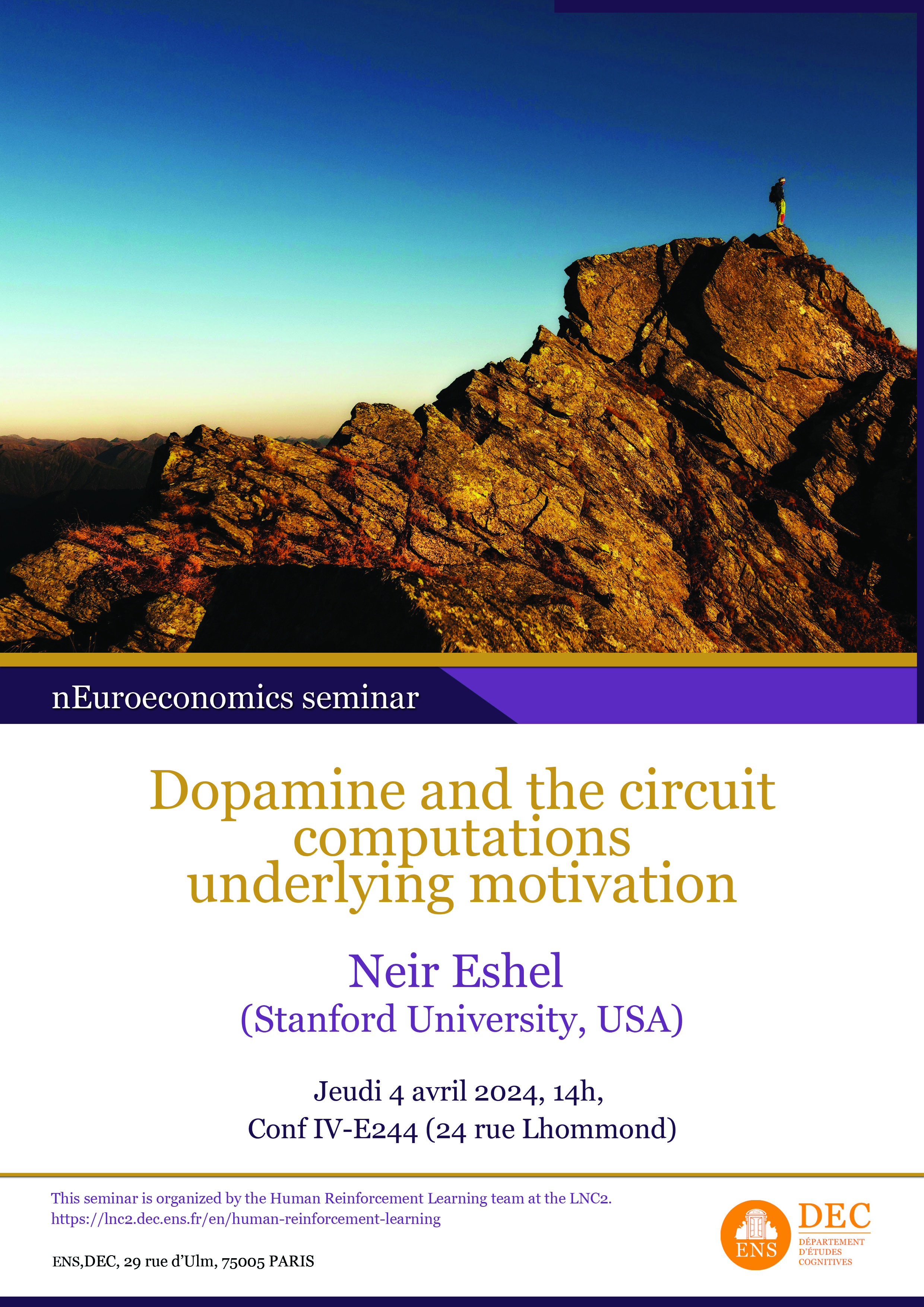
Dopamine and the circuit computations underlying motivation
 Motivation–the energizing of behavior in pursuit of a goal–is central to daily life. Disruptions in motivation underpin multiple neuropsychiatric disorders, from abnormally low motivation in anhedonia to abnormally high motivation in addiction. Although dopamine (DA) release has long been implicated in motivated behavior, the mechanisms of that link remain unclear.
Motivation–the energizing of behavior in pursuit of a goal–is central to daily life. Disruptions in motivation underpin multiple neuropsychiatric disorders, from abnormally low motivation in anhedonia to abnormally high motivation in addiction. Although dopamine (DA) release has long been implicated in motivated behavior, the mechanisms of that link remain unclear.
Neural representations of learning and behavior
A fundamental question in neuroscience is to understand how coordinated neural activity and structured circuitry in the brain are responsible for generating behavior. Decades of experimental and theoretical work have demonstrated that correlated neural activity has a strong impact on population coding by reshaping neural representations of external stimuli. More recently, large-scale recordings have provided insight as to the dynamic mechanisms by which neural populations perform computations, but the link to their circuitry remains unclear.
Ethnic-racial discrimination influences on neural representation of threat and safety learning in children: A community-engaged approach
Ethnic-racial discrimination is a salient reality and powerful threat for minoritized youth which poses a serious community health concern as it is associated with deleterious mental health outcomes such as anxiety. During middle childhood, when important regulatory brain networks are undergoing substantial change, exposure to discrimination may affect brain development and exacerbate behaviors that maintain and escalate anxiety symptoms.
Executive function scaffolds reinforcement learning
Reinforcement learning frameworks have contributed tremendously to our better understanding of learning processes in brain and behavior. However, this remarkable success obscures the reality of multiple underlying processes, and in particular hides how executive functions set the frame over which reinforcement learning computations operate. In this talk, I will show that executive functions define the learning substrates (such as choices, stimuli and reinforcers) for other learning mechanisms, setting the stage for what we learn about.
Predictibe and Interpretable: using classic cognitive models and artificial neural networks to understand human learning and decision-making
Quantitative models of behavior are a fundamental tool in cognitive science. Typically, models are hand-crafted to implement specific cognitive mechanisms. Such "classic" models are interpretable by design, but may provide poor fit to experimental data. Artificial neural networks (ANNs), on the contrary, can fit arbitrary datasets at the cost of opaque mechanisms. I will present research in the classic tradition that sheds light on the development of learning during childhood and the teen years, and some studies on hierarchical learning and abstraction.
